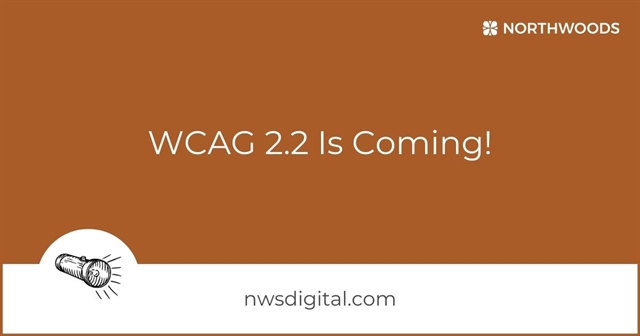By Alex Boston
March 4, 2024
5 Minute Read
Updated: March 4, 2024
Originally Published: Oct. 24, 2022
Anyone with an X (formerly known as Twitter) account can craft content and share it with a broad audience. Creating effective content – meaning content that compels your desired audience to engage with you or your business – is much more challenging.
This is especially true in the higher education sector. Winning the attention of prospective college students is difficult, particularly with shifting demographics and rising skepticism of a degree's value. Higher education is an expensive, life-changing, daunting commitment.
How can web content break through those barriers and make your school the clear, best choice to prospective students? Here are some tips.
Content Strategy Basics: Serve Your Audience
Branded taglines and flashy campaigns might serve your branding, but they may not help audiences get to know your school. You need content strategy that helps your ideal student – who might not know your school exists – learn about you and enroll.
Understanding your audience is just the first step. Using that understanding to create content that serves the audience's needs is far more challenging. And the best way to do that is to focus on clearly illustrating how attending your institution will benefit them. Not hitting the talking points. Not bragging about institutional accolades. Focus, fist and foremost, on giving your audience the information they need to choose your school
That's how you find the students you want online and drive higher enrollment, whether you’re starting a website redesign or producing a single piece of content. You can get the process started by asking and answering a few simple questions.
Whom Do You Want to Reach?
It’s difficult to compose effective content when you don’t know who it’s for. Failure to specifically define the ideal student often undercuts higher ed digital marketing. The “ideal student” is NOT “anyone who wants to come here.” That notion leads to unfocused, kitchen-sink websites that serve internal audiences more than prospective students.
Work with stakeholders and leaders to identify goals and find the audience that will help you meet them. Once you have a rough idea of that audience, dig down. Get specific.
- What fields of study interest them?
- What’s their socioeconomic background?
- Why are they interested in your school?
- What do their academic records tell you?
- Is the audience mostly local? Regional? National and beyond?
Any considerations that narrow your focus will guide you to more intentional digital content that speaks to your well-defined audience.
What Information Do They Need?
You can start answering this question by analyzing engagement with your existing content, to see what draws the most user attention. Google Analytics, the industry standard tool for learning how visitors use your site, can tell you a lot. A quick audit will reveal which pages attract the most traffic. User surveys and heatmap tools can yield a more complete picture of which areas of your current site draw the most attention.
As you audit your current site, try not to judge the value of content and pages solely on numbers of views or visitors. Depending on your goals, pageviews might not be the most important metric. Let’s say your primary goal is to increase enrollment. Look for content that helps drive that goal. In other words, find content that successfully leads people towards your application portal or admissions requirements.
We know from experience that the list of available programs, admissions requirements, and cost/financial aid information should be top priority. Beyond that, every school has its own messaging priorities, initiatives, and offerings that might be worth highlighting in content.
Where Are They Looking for that Information?
Web browsing habits have changed dramatically as social media and search engines have become more advanced. However, most prospective students still start their search at the main university website. Social media is a close second; don’t neglect your Instagram page!
Know how your visitors scan your current site for information. Use Google Analytics and feedback to get a broad idea of where users get lost.
The best way to understand where your target audience gets lost is to ask them directly. Website survey tools are the easiest way to do this. Ask users to complete a quick survey after they visit. Questions like, “What information did you search for today?” and “Did you find what you were looking for?” paired with some basic demographic information can yield initial insight.
If you have the resources, consider assembling a focus group of college-bound students who are mostly unfamiliar with your school. Current students perceive your school and its offerings differently than those who don’t know it well. Digital marketers love solid, numerical data, but don’t underestimate how much you can learn from a direct, personal conversation with your target market.
What Actions Do You Want them to Take?
You know who they are, you know what they want, and you know where they look to find what they want.
Now, what do you want them to do once they're on your site?
The answer may not be "apply for admission" in every case. Higher ed institutions are diverse, dynamic organizations with a wide variety of audiences and goals. Each webpage and piece of content you create should serve its own distinct purpose within your broader digital strategy.
Every facet of the content and layout of every relevant page should support their primary purpose. For example, if you want to drive new applications, place an Apply Link prominently on the page (in multiple places, if feasible) to encourage user engagement. Fill the page with content that gives them a good reason to do that, like photos, videos, or accolades that help them understand the student experience at your institution. Focus on how it will benefit them to attend your school.
If you’re doing a redesign, use exercises such as page tables to define a visitor goal for each page of your site. Include only information that serves the objective of that particular page. This helps keep your content clean, streamlined, focused, and easy for visitors to browse and find what they seek.
How Will We Know What's Working?
Measurement is often neglected during the content planning process. Figure out ahead of time how you will track the effect of your content in terms of reaching specific goals.
If your goals focus on brand awareness and reach, simply engaging readers might be enough. You can use time-on-page and similar metrics to broadly analyze content engagement. If you’re trying to drive new applications or donations to your advancement foundation, you need a more precise method of measurement.
With the proper setup, Google Analytics can show how many times visitors click on links, fill out forms, call phone numbers, and engage in a host of other custom interactions. You’ll see immediately whether your content supports your strategic goals.
It takes some code work to get this feature rolling. You might need some expert assistance with the Google Analytics 4 setup. Our GA4 experts can create GA setups that will put key data at your fingertips.
Content Strategy in Higher Ed: A Unique Challenge
Creating effective web content is tough for any industry. The political, resource-strapped, bureaucratic world of higher education makes it even tougher. It’s very easy to get lost in the weeds of stakeholder feedback, losing focus on what you’re trying to accomplish with your content.
Stay focused on your goals and never forget the audiences you serve with your content. By keeping them and their needs in mind, you can develop a strategic approach to content production, publication, and governance that helps your school stand out.
For assistance with your higher ed content strategy, audience research, or analytics, don’t hesitate to contact us. Our team of higher ed experts can help you achieve your goals!
Related Blog Posts

Enrollment in America's colleges and universities is shrinking, making competition for new students fierce. Now more than ever, schools need to reach prospective students where they live: online. Here are key trends that higher education marketers should consider when developing a digital strategy.

Gathering data is critical to understanding what visitors do on your website. Here are three methods to give you the data and insights you need.

Final publication of the newest version of the Web Content Accessibility Guidelines, WCAG 2.2, is expected in 2023. Here's what you need to know about the updated standards to ensure your website is accessible to all.